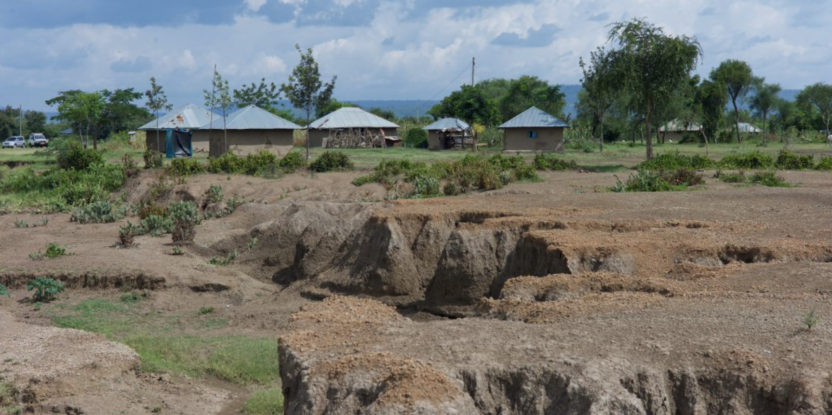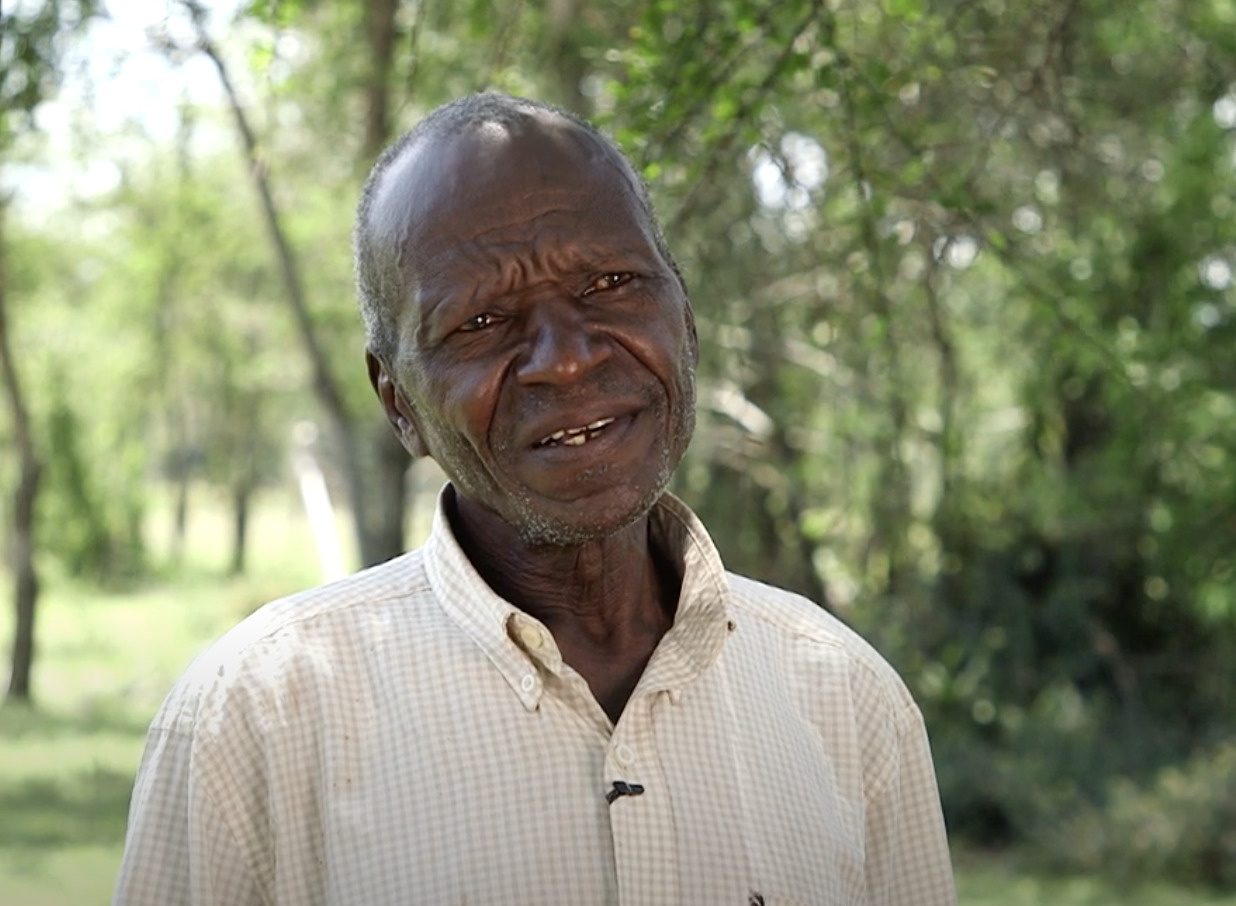
Hellen Atieno Owuor remembers a time when farming goats and cattle in the sub-humid eastern highlands of Kenya was a relatively straightforward task.
“I came here in 1985 and started farming in 1990,” she said. “There was this grass we call ‘muthno’: wherever that grass grows, it’s normally plentiful, and it used to help us – especially because cows and goats love it.”
Because of that abundant grass, farmers kept a lot of animals – fellow farmer Eddy Ouko recalled herds of over a hundred head. But since then, things have changed. Invasive species that are inedible to livestock are taking over from palatable plants like muthno.
Some areas are so degraded that the soil is completely bare, and erosion is taking hold. That is having an impact on farmers’ livelihoods and food security through dwindling livestock productivity. It is also prompting encroachment into nearby forests and other grasslands, as farmers seek more fodder for their hungry animals.
This ecological and social challenge – and its potential solutions – are documented in a new short film, which shares the story of the farmers and researchers who are working to turn the fortunes of the region’s degraded grasslands around.
The work forms part of Project ReDEAL – Restoring Degraded African Landscapes, an interdisciplinary initiative led by Mariana Rufino from the Lancaster Environment Centre that brings together local farmers’ indigenous technical knowledge and scientific research based on plant biodiversity and improved livestock management.
As the film makes clear, those sizable herds that Owuor and Ouko recalled were part of the problem. When stock numbers are high, farmers often overgraze fields, which can degrade the soil and eliminate beneficial grassland species. Climatic stresses, which are increasing in frequency and severity, can also exacerbate the issue.
In that context, encouraging farmers to manage their stocking rates, and to graze their animals sequentially in smaller areas so the grassland has time to recover, is one part of the solution. Another is restoring the health of soil that’s already been degraded.
“One of the issues with degraded soils is they’re very low in organic matter, very low in the structure of the soils, and also they lack life,” said Richard Bardgett, a scientist at Britain’s University of Manchester who is involved in the project. “So, what we’re trying to do is…kickstart that process and bring life effectively back to these degraded grassland soils.”
To that end, the ReDeal researchers have been running experiments in western Kenya to restore soils using manure — a highly accessible resource for livestock farmers — and local soil inoculum — an additive containing beneficial microbes that promote fertility and plant health. The researchers and farmers are also working to identify appropriate combinations of grassland plants that can be used to initiate restoration processes — and feed livestock as they do so.
The overarching goal is to lay out the underlying biological mechanisms behind successful restoration of degraded land in these environments, as well as gain understanding of the resource governance that’s required to sustain this success.
In all of this work, collaboration with local community actors is critical. Farmers in the region have extensive knowledge already about how their ecosystems operate; the research team hope to reflect the value of what’s known already, and combine that with modern scientific methods to help restoration processes take off.
“By allowing farmers to be partners in this research project, we are empowering them, we are partnering with them to move every step together with them,” said Fred Wandera, a soil scientist at the International Livestock Research Institute (ILRI). “They have the local conditions, they have the farms, they have the livestock, so all research that we do should be based on, or have a bearing on, the local conditions and the farmer practice, such that they can appreciate what we’re doing, and we can measure meaningful outcomes,” he said.
The film premiered at Britain’s Lancaster University on Nov. 16 2021, at an event facilitated by local secondary school students.
The integration of young people is a key element of the project at multiple levels, as the researchers and farmers recognize that the younger generation will be largely responsible for carrying on this kind of work into the future. “As young people, it’s our obligation to take care of soil erosion,” said Bernard Kipkemoi, a young farmer interviewed in the video, “because once the topsoil is eroded you totally lose the nutrients. What you are left with are rocks where good grass cannot grow.”
“This problem is actually my generation’s problem that we’re trying to solve here,” echoed Patricia De Britto Costa, a young researcher at the University of Manchester who is also involved in the project. “And we have to start it now, because restoration projects take a long time to reach an end-point and actually recover what we want to recover.”
We want you to share Forests News content, which is licensed under Creative Commons Attribution-NonCommercial-ShareAlike 4.0 International (CC BY-NC-SA 4.0). This means you are free to redistribute our material for non-commercial purposes. All we ask is that you give Forests News appropriate credit and link to the original Forests News content, indicate if changes were made, and distribute your contributions under the same Creative Commons license. You must notify Forests News if you repost, reprint or reuse our materials by contacting forestsnews@cifor-icraf.org.
